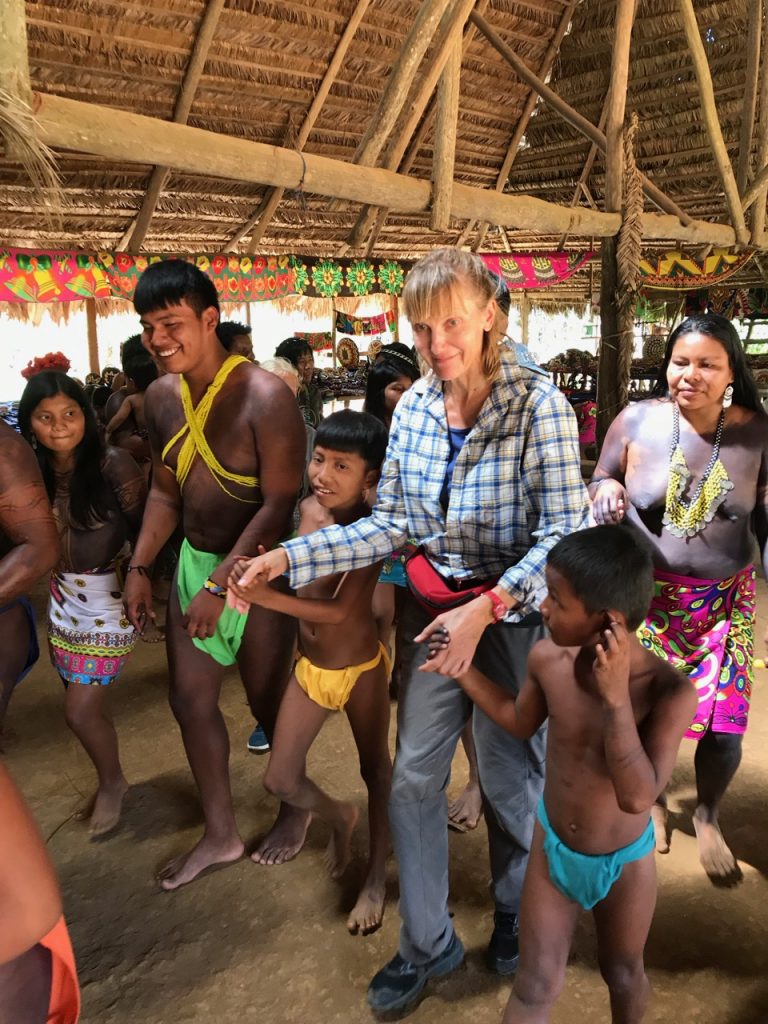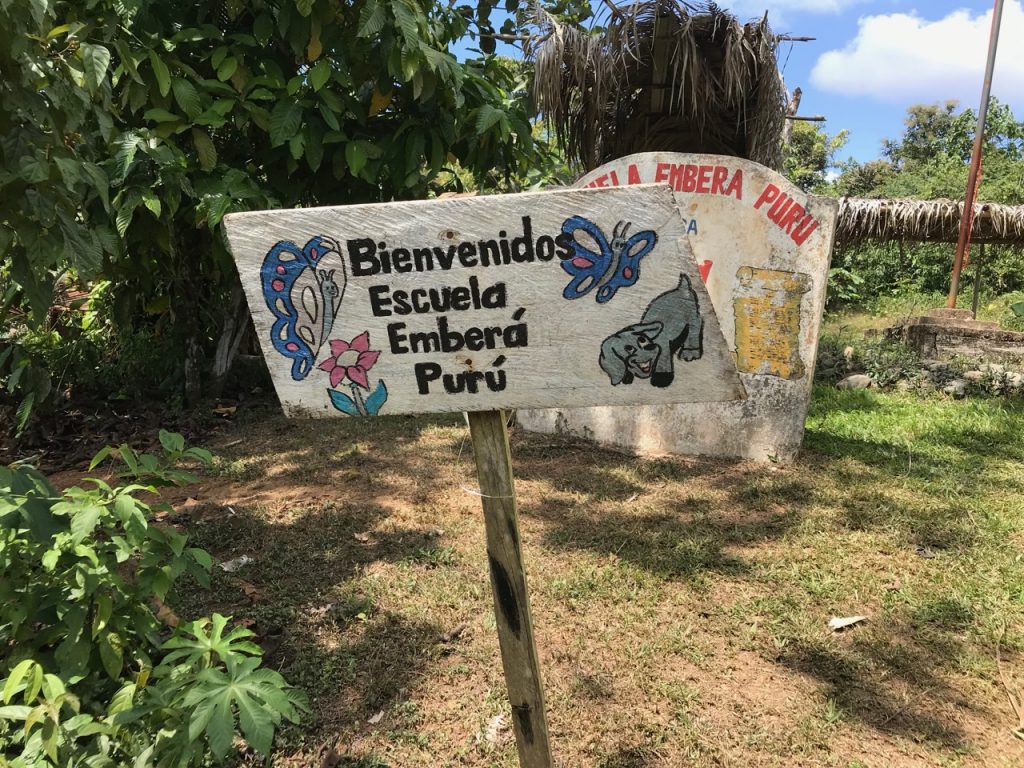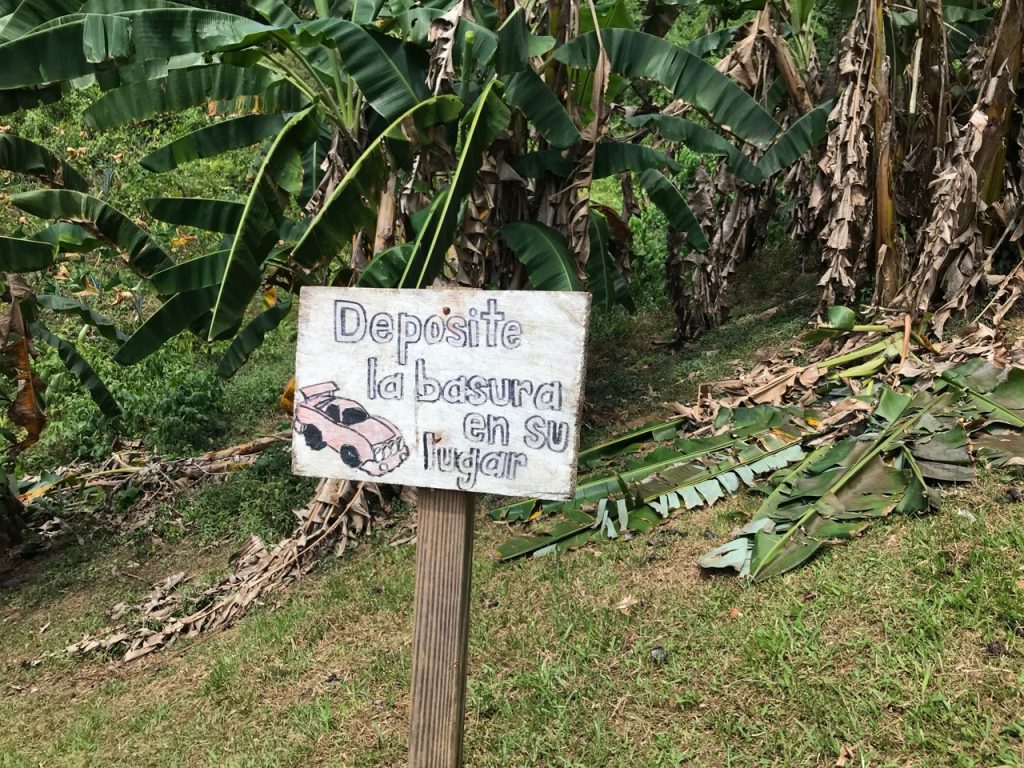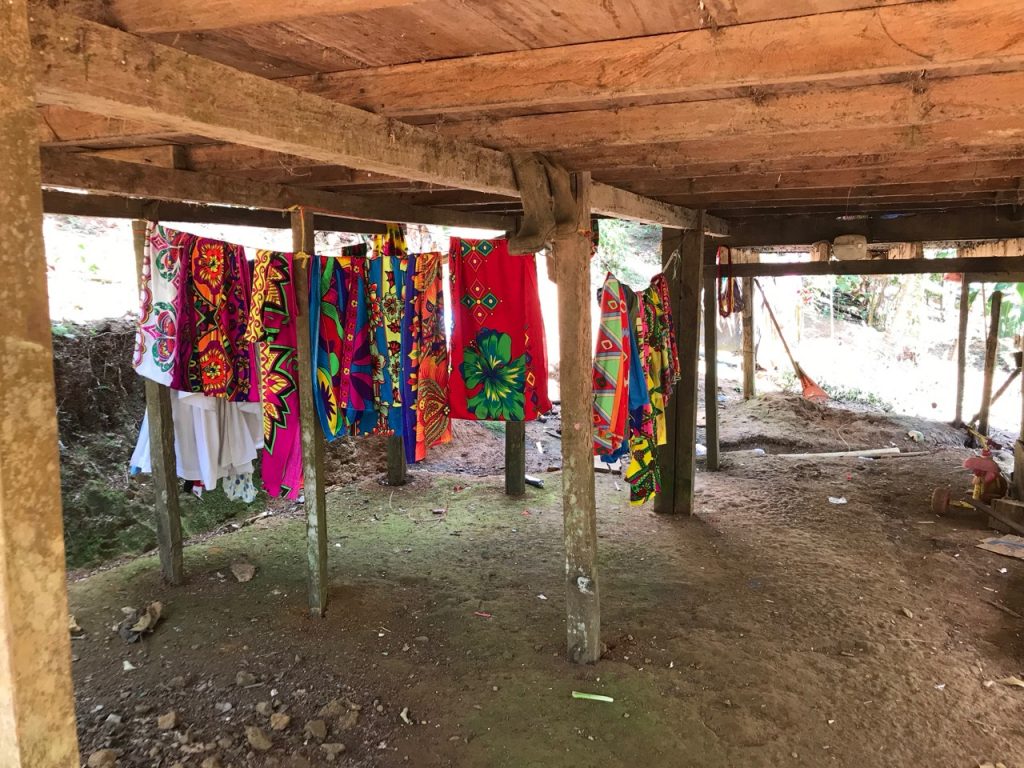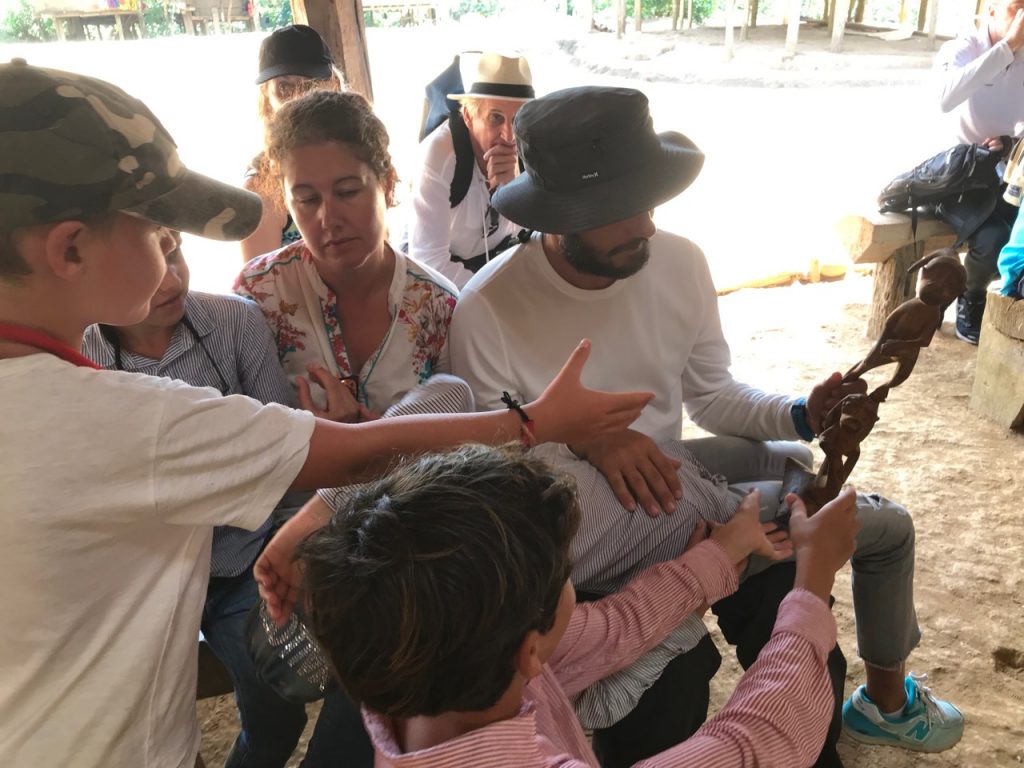After many busy days of boat preparation and traveling, we weren’t sure we were going to participate in the World ARC-organized Embera Indian village tour but Marin wanted to go so Becky, Jaja and I joined her. It turned out to be a worthwhile day.

We rode a bus from the marina for about 45 minutes and then boarded dug-out canoes with outboards to reach the Embera Indian village of Embera Puru. There, the leader of the village gave us a talk translated by a man that has been visiting the village for over a decade. The leader told us that the Embera people moved from the Darien Gap (jungly part of Panama/Colombia) many years ago due to persecution from the Panamanians/Colombians. I think the Guna people of the San Blas also moved from there.

They moved to the Chagres river area in Panama and lived there for years until the government of Panama declared the area a national park. The Embera people negotiated the ability to continue living there but many of their traditional ways of life like hunting, chopping down trees, agriculture, etc. could no longer be practiced in full. The people living in this particular village have chosen to continue the traditional Embera way of life and maintain as many of their traditional pursuits as possible. They still wear traditional dress, although it is now made from fabric instead of tree bark or animal skins. There are other villages where apparently, they have more of a mixture of modern and traditional ways.
The Panamanian government sends a teacher to the schools in the villages where children go until they are about 12. Then they either leave school or their parents send them away to private schools where the children either live with relatives or board at the school.
They speak Embera and Spanish and were very friendly and inviting. They get their income from hosting tourist groups like as as well as selling their woven palm baskets and masks and intricate carvings made from wood and a particular kind of dried fruit/nut (not quite sure what it was).

After joining their parents at their respective craft booths for a while, the children all disappeared to a platform under one of the palm-thatched roofs. What were they doing? Streaming a video on a laptop, of course! We haven’t reached a place yet where we haven’t seen at least one cell phone or electronic device make an appearance.







